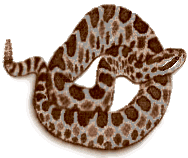Welcome to my garden....
Some of the beds were still sleeping last week,
until we had a heat wave of 26'C for a couple of days straight
Then everything came to life! The flowers bloomed and the grass turned green.
Popsicle's stained clothing and flip-flops made their comebacks!
I even pondered cutting the grass for the first time this year.
Lucky for me we had no gas and my ambitions turned to relaxing and enjoying the view.
Summer-dreaming weather it was!
Can you believe this photo was taken the 21st of March?
It's usually to cold to go outside still and the flowers would just be starting to grow. My garden is about a month ahead of it's regular schedule and I am wondering how much of this is global warming?.
Warmer temperatures bring bugs and other undesirables to the garden...starting with snakes!
While I was on my knees weeding, a garden snake slithered right up to me and I fell backwards screaming. This snake just looked at me as to say what?..I cussed at it...it didn't move (my husband later informs me they have no ears) I threw a rock at it...it didn't move...threw my trowel and still nothing....being the bigger person...I moved.
This glorious event usually occurs in late July when my plants are really tall and I immediately stop cleaning the garden beds until fall or there are no signs of snakes. Never thought the fun would come so early but it prompted me to do some research and to my horror found out that Canada does have one poisonous rattlesnake.
ONTARIO DISTRIBUTION
The Eastern
Massasauga Rattlesnake , Sistrurus catenatus, is the only venomous snake still found in Ontario. Although the venom is potent, this snake's small size and retiring habits make it a minor risk to humans.
Massasaugas once had a wider range and were far more common in southern Ontario near the shores of Lake Erie and Lake Huron. Rattlesnakes were common in the Windsor area fifty years ago but their population has seriously declined with development and urbanisation of the area. They are still relatively common on the Bruce Peninsula and the eastern shoreline of Georgian Bay. Ojibway and the Wainfleet Bog near Port Colborne support small populations.
The range of the Eastern Massasauga closely coincides with the range of tall grass prairie in the United States. Less than one percent of the original prairie remains in North America and the Massasauga has declined over much of its range. These attractive grey and black reptiles were once killed indiscriminately because of a perceived danger of being bitten. In Wisconsin this rattlesnake was considered a nuisance up to 1975 and bounties were paid for dead snakes. It is now considered endangered in Wisconsin and Massasaugas are protected in eight of the ten states where it is found.
Due to the rapidly disappearing habitat and declining population, the eastern massasauga rattlesnake has been officially designated as threatened and is protected from harassment or killing under Ontario's Wildlife Conservation Act and the new Ontario Endangered Species Act . They are quite timid and pose no threat if they are left alone. For more information visit the Massasauga Recovery Team web site.

ETYMOLOGY
The name catenatus in Latin means chained or chain-like and refers to the central row of dark spots on the body. Massasauga is from the Ojibwa language and means "great river-mouth" which alludes to the marshy habitat of the snake.
IDENTIFICATION
A rattlesnake can be identified by the presence of bony, loosely segmented rattles at the tip of the tail (click here for sound), a pit between the eye and nostril and the vertical cat-like pupils. Adult length is about seventy-five centimetres (thirty inches). The head is not so triangular in shape as other rattlesnakes but it is noticeably wider than the neck.
~ Courtesy of http://www.ojibway.ca
I am praying I NEVER see one!
So much so that it has me thinking about changing out my plants to drought resistant species and spending less time tending the garden beds.
Click on the image to check out Better Homes and Gardens free garden plans.
And for their list of the Top perennials to have in your garden.
Seems rather foolish to let a big ole' rattlesnake get the upper hand when there are so many beautiful plants to be growing and enjoying. What's would be the point living in the country if not to have big and luscious garden beds?.






















No comments:
Post a Comment